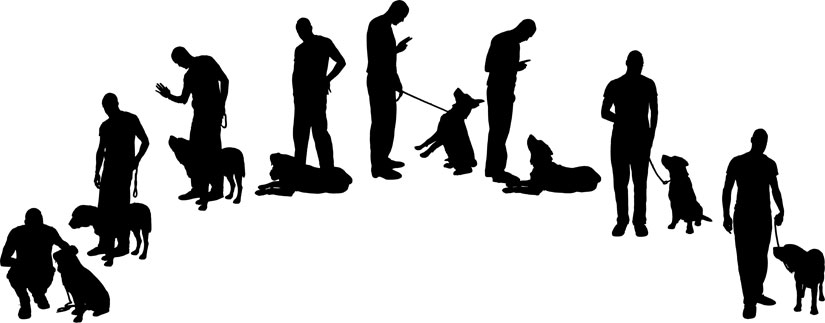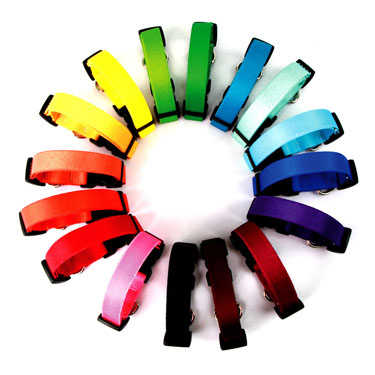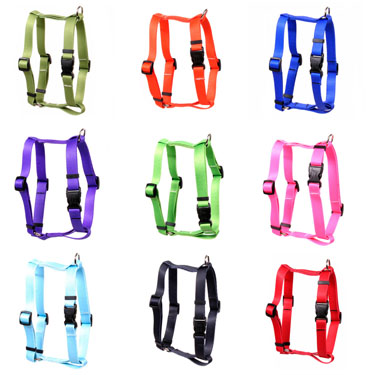Types of Dog Collars and Harnesses - An Intro
Posted by Hot Dog Collars on 06/06/16 3:33 PM

![Tweet:Types Of Dog Collars And Harnesses - [SOURCE: Hot Dog Collars] - http://ctt.ec/872dJ](http://clicktotweet.com/img/tweet-graphic-4.png) An Introduction to Types Of Dog Collars And Harnesses
An Introduction to Types Of Dog Collars And Harnesses
Are you new to owning a dog? Are you curious about the different collars and harnesses out there on the market today? Here is a quick overview of the options available at Hot Dog Collars
 Standard Collar
Standard Collar
This is the type of collar that is most common and what comes to mind when people think of dog collars. Standard collars are either a snap-in or buckle variety. There is usually a metal loop to attach an identification tag and rabies vaccine information. In order to get the correct size, one must measure a dog’s neck and choose accordingly. A good rule to remember is if you can fit two fingers under the collar, then it is a good fit. It is always a good idea to check for this no matter if you have a growing puppy or a senior dog. The last thing you want is a dog with a collar around its neck that is too loose or too constricting. You don’t want to have your dog slip his collar nor do you want your dog develop skin issues or hair tangles.
Martingale Collar
Ah, the martingale collar. This one is my favorite because it is for dogs who are escape artists. Ever have a dog put the brakes on while on a walk, pull backward, and slip his collar right off? Well, the martingale is designed to make this less of an issue. Originally, this type of collar was meant for greyhounds and other sight hounds because of their smaller head size. A martingale differs from a standard collar because it can tighten around the dog’s neck if they tend to pull away from you. It looks like a large collar and a smaller collar connected by two metal rings. The smaller collar section has a third ring attached to it and this is where you would connect a lead. It fits a little looser than the standard collar. When fitting a dog with a martingale collar, it should easily slip over their head. If the two rings touch when you tighten it, then it is too big. You will risk giving your little escape artist a chance to bolt.
Roman Harness
 A Roman harness is great to have because it takes the pressure off the neck of the dog when you take him for a walk. It attaches around the chest area and is connected to a wider strap that resembles a collar which sits on top of the shoulder blades. The area where you attach the lead is located on the top of the harness along the back of the dog. Harnesses are great for dogs that are brachiocephalic (“pug-nosed”), have collapsible tracheas, have a respiratory disease, or have a neck injury. Of course, you don’t need a medical reason to use a harness. Lots of owners prefer to walk their dog with a harness because it provides comfort to the dog by not pulling on the neck area and they are easily adjusted. Just like with the standard collar, you should be able to stick two fingers under the harness easily to ensure proper fit.
A Roman harness is great to have because it takes the pressure off the neck of the dog when you take him for a walk. It attaches around the chest area and is connected to a wider strap that resembles a collar which sits on top of the shoulder blades. The area where you attach the lead is located on the top of the harness along the back of the dog. Harnesses are great for dogs that are brachiocephalic (“pug-nosed”), have collapsible tracheas, have a respiratory disease, or have a neck injury. Of course, you don’t need a medical reason to use a harness. Lots of owners prefer to walk their dog with a harness because it provides comfort to the dog by not pulling on the neck area and they are easily adjusted. Just like with the standard collar, you should be able to stick two fingers under the harness easily to ensure proper fit.
Step-in Harness
As with the Roman Harness, a step-in harness does not pull on the dog’s neck while the dog is on a lead. The difference between the two harnesses is the design. With a step-in harness, the material does not go around a dog’s neck to get it on initially. It’s a figure-eight design with two loops that the dog steps into with his two front feet. The material wraps around the dog’s chest and snaps at the back area. The loop for attaching a lead rests near the dog’s shoulder blades. Some people prefer to use the step-in harness over the Roman harness if the dog has issues with their neck or head.
So what collar or harness is right for your dog? It’s always best to contact your personal veterinarian, or a qualified dog trainer to help. Different dogs have different needs, but it is always a good idea to have your dog’s ID tags and rabies tags on the collar in case they become lost. Also, please remember to follow any manufacturer’s directions for measuring your dog for a proper fit.
About Our Guest Blogger
Colleen Fitzpatrick is a former dog groomer turned writer from Upstate New York. She loves all dogs but is particularly fond of basset hounds. She is passionate about animal rescue and hopes to foster dogs once her children are a bit older.

